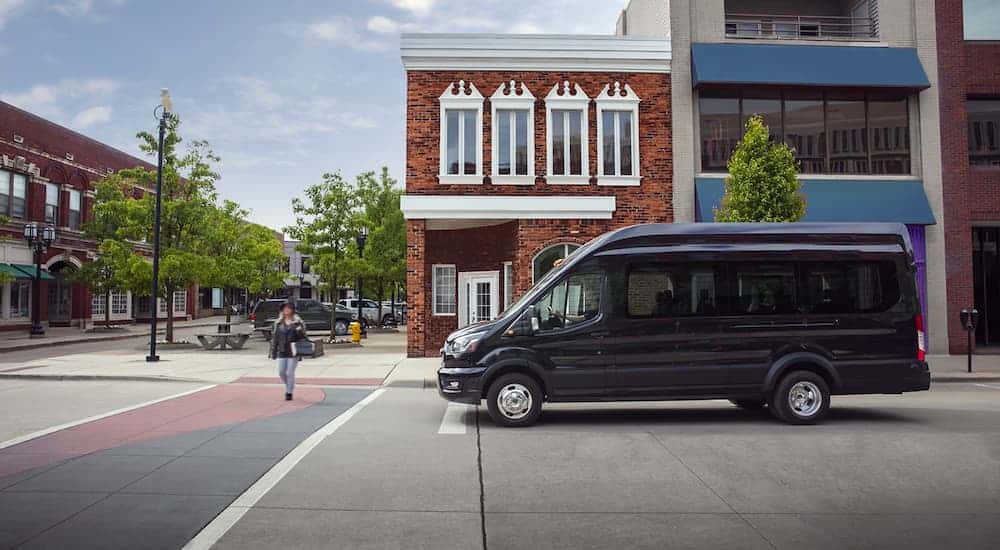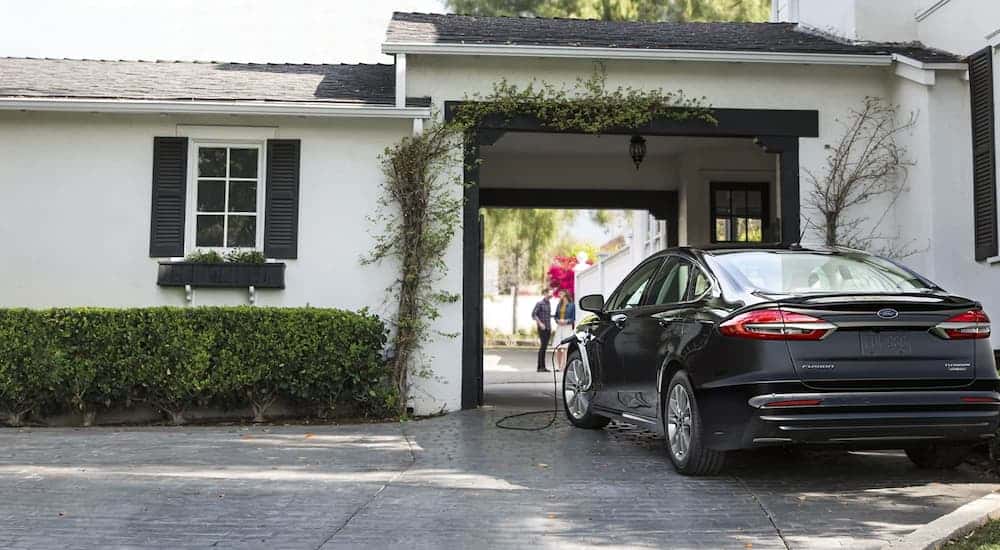Hybrids. We hear about them all the time. They’re the constant hotness in the world of transitioning away from the petrol-based combustion engine. In fact, it’s increasingly uncommon to see an entire model year line-up from a brand that doesn’t include a hybrid or electric vehicle of some sort. For car shoppers interested in purchasing a Ford, you might be wondering if the Ford hybrids and electrics are worth the price of entry and if they’re good all-around vehicles to own? However, some of you might be just as interested in learning how a hybrid vehicle works.
Well, the purpose of this guide here is to breakdown the basic components of Ford’s hybrids and give you an in-depth look as to what makes them tick and how. Armed with that information, you can decide for yourself if a hybrid is the right kind of vehicle for you, as well as what type of hybrid is best for your needs – what? You didn’t know there were different types of hybrids?
What Is a Hybrid Vehicle?
Simply put, a hybrid is a vehicle that combines a traditional internal combustion engine with alternative fuel or power sources. Hybrids are usually designed to reduce carbon emissions and engine wear while increasing fuel economy and range. However, there are some hybrids that use their electric motors primarily for power and acceleration rather than for efficiency. The new 2021 Ford F-150, with its 430-hp Power Boost hybrid drivetrain, is an example of this type of vehicle.
Unlike pure internal combustion or battery-powered vehicles, hybrids are designed so that you don’t have to fully rely on one type of power source to keep a vehicle running. Combustion-based vehicles require a tank of gasoline, diesel, or other combustible fuel to operate, while electric vehicles need charged batteries. Hybrids eliminate having to rely solely on one type of fuel source by combining the two for the best of both worlds and fewer restrictions on how the vehicle performs on the road.
What Type Of Hybrid Vehicles Are There?
Different companies use different types of hybrid vehicles. Some designs rely on using a mixture of compressed air and electric motors, while hydraulic hybrids use hydraulic accumulators to propel vehicles using pressurized gas. However, these types of hybrid never really took off as a mainstream option like some of the other options. When most people say hybrid, they are talking about vehicles that rely on a mixture of batteries and combustion engines. There are also some popular hybrids known as plug-in hybrids that can run on battery power alone but need to be plugged into a charging station to fully recharge.
Parallel hybrid vehicles are very common and feature both a combustion and electric engine working in tandem. The electric portion is typically charged through regenerative braking. Series hybrids are also charged by regenerative braking, but they rely on an electric motor for propulsion instead of the combustion engine, with most of the electronic components doing most of the work while the combustion engine works as the generator.
Series-parallel hybrids split the work between a combustion engine, power converters, an electric engine, and a battery pack. The series-parallel uses both the electric and combustion components for propulsion but relies on the combustion engine to help recharge energy for the battery when the electronic components aren’t in use. Ford uses a combination of hybrid types, depending on the model, to deliver what car shoppers are looking for out of the vehicle.
How Do Parallel Hybrids Work?
Parallel hybrids see the combustion engine and the electric motors work in tandem or sequentially to propel the vehicle. The electric power source and the combustion engine are connected to the drivetrain, which then converts that power into torque. Parallel hybrids typically bounce back and forth between the engine and the electric battery pack moving the vehicle, often using engine start-stop technology when the car is idle or braking in order to conserve fuel and reduce engine wear. In parallel hybrids, regenerative braking is typically used in conjunction with mechanical braking systems to recharge the battery pack by converting kinetic energy into electricity.
For parallel hybrids, when the battery isn’t in use, the combustion engine typically feeds power through a generator that also helps recharge the battery. When the car is idling or slowing down, the battery pack kicks in to help conserve fuel and stretch the fuel economy of the vehicle. Ford’s Fusion Energi plug-in hybrid operates on a parallel basis. However, even with the combustion and electric engines powering the vehicle, it still requires to be plugged in to be fully recharged.

How Do Series Hybrids Work?
Series hybrids are designed where the engine isn’t connected to the wheels. Instead, the combustion engine is connected to converters while the electric motor powers the vehicle through the drivetrain. The electric motor typically starts the vehicle and works during low-power or low-speed modes, but as the vehicle picks up speed, the combustion-based engine begins to work in tandem with the electric motor. For cruising or steady traveling speeds, the combustion engine does most of the heavy lifting while also charging the electric battery pack.
This method is used to power Ford hybrids such as the Ford Transit Custom PHEV, which uses a 13.6 kW battery pack for 35 miles of all-electric range. When traveling longer distances, the 1.0-liter EcoBoost three-cylinder gasoline engine kicks in to recharge the battery on the go. However, the gasoline engine cannot power the vehicle directly.
How Do Series-Parallel Hybrids Work?
Series-parallel hybrids are a mixture of the two methods above, operating on an electric motor and generator, as well as a combustion engine. The battery generates the initial power for the vehicle through the electric motor that then moves through a torque converter that feeds power through the drivetrain. This is what propels the vehicle forward or backward.
Unlike the series or parallel hybrids, where the combustion engine is usually idle or supplementary during low speeds or acceleration, the series-parallel hybrid sees the combustion engine helping the electric motor to power the vehicle during low-speed acceleration. As the vehicle picks up speed, the power is converted into energy to recharge the battery pack while the combustion engine does most of the work.
This technology often works in conjunction with engine start-stop functionality so that as the vehicle is slowing down or stopped, the engine stops and saves on fuel while the electric motor takes over. In combination with regenerative braking, this can extend the fuel economy of series-parallel vehicles while also reducing emissions. An example of a series-parallel hybrid is the Ford Fusion, which uses a smaller battery pack and draws less electric power than a series hybrid.

How Do Plug-In Hybrids Work?
While it might seem like plug-in hybrids are separate from the three types of hybrids listed above, they actually aren’t. A plug-in hybrid is simply a designation used to identify vehicles that have battery packs that require charging by plugging them in at charging stations, hence the name “Plug-in hybrid.”
You can often plug in these vehicles at a home charging station or at various charging stations located throughout various cities. Previously plug-in hybrids used to take many hours to charge, sometimes up to a full day. Newer plug-in hybrids can charge in as little as 20 minutes but average anywhere between two to eight hours depending on the size of the battery pack, how depleted the batteries are, and how many volts the charger dispenses.
Keep in mind that not every hybrid vehicle is a plug-in hybrid. Some hybrids recharge the battery pack through the aforementioned regenerative braking process or through generators attached to the combustion engine. However, plug-in hybrids are increasingly popular for all types of vehicles.
Driving Your Hybrid
Most hybrids these days have digital displays that drivers can use to determine whether the vehicle uses more electric or combustion propulsion, saving on fuel or battery power, depending on the driver’s preference. In any case, hybrids offer extended gas mileage with reduced emissions, and usually without sacrificing passenger volume or cargo capacity. And with modern battery and electric motor technology, the latest hybrids are often faster and more powerful than their gasoline counterparts. Hopefully, you now have a better idea of exactly how Ford hybrids work and can now better identify which Ford hybrid model best fits your preferences.

